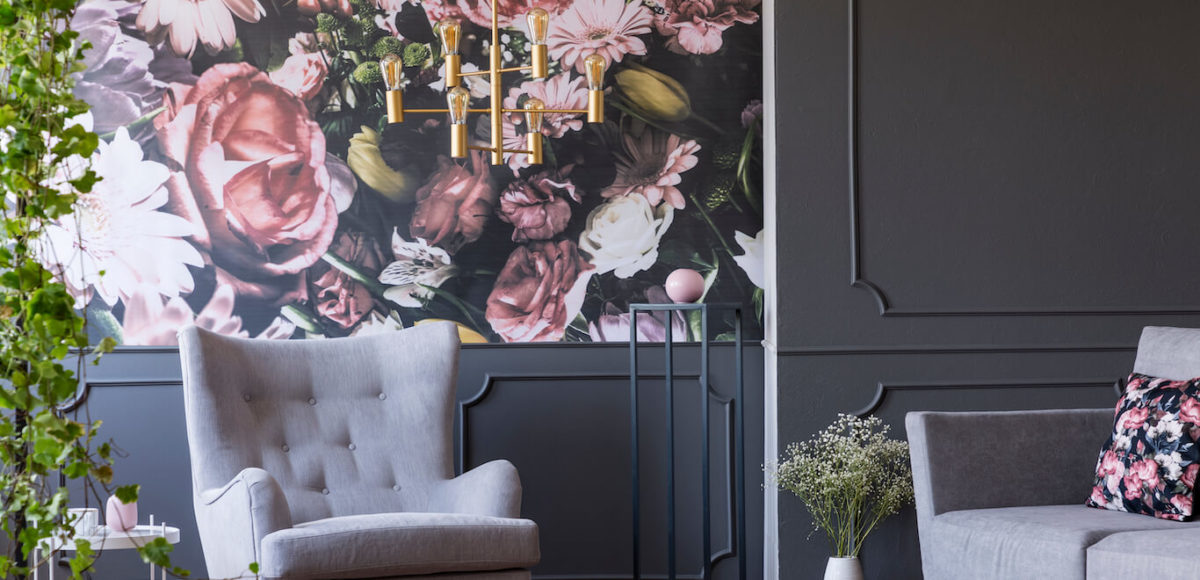By Merri Cvetan
You found the perfect apartment to fit your lifestyle. You love the windows and view; it has big rooms with plenty of storage and a killer kitchen. Then, you look down and notice the floors aren’t so pretty. If your landlord isn’t too keen on replacing the linoleum or tile, you’re stuck, right? Not so fast—an area rug can come to the rescue.
A rug not only camouflages old floors, but adds color and texture to a room, not to mention how great it feels underfoot. Plus, there’s the added bonus of getting to take it with you when you move.
But where do you start? There are so many options. In fact, as an interior designer, I usually recommend picking out a rug before you buy furniture and decide on the room’s color scheme. There are generally fewer color and pattern choices for rugs compared to the myriad of upholstery fabric selections, so it’s easier to match fabric and furniture to a rug than the other way around.
Aside from covering up outdated flooring, there are many reasons to decorate with an area rug:
1. Comfort
Never discount the need for comfort. I don’t know about you, but I prefer to sink into a soft rug when I hop out of bed in the morning. The bedroom is the perfect room for a luxurious plush pile rug, since it gets less traffic than the rest of the house. It isn’t subject to dirty shoes and spills, so you can concentrate on color and comfort.
Nothing compares to wool in a touch test. It’s also naturally fire retardant, resilient and environmentally friendly. Unfortunately, wool rugs tend to be the most expensive. This might be one item to splurge on.
2. Children and Pets
If you have children, a rug in the living room makes for a much nicer place to play. Of course, a high pile or plush rug is beautiful in this busy family space, but you might want to consider a loop pile (also known as Berber), low-plie or a woven rug—especially if you’ve ever stepped on a Lego buried deep in plush carpet fibers. The added advantage of a woven rug? It’s reversible. Consider a rug in a darker color or small pattern to hide spills and stains.
Synthetic rugs (nylon, polyester, acrylic and polypropylene) are less expensive than wool, durable and resistant to stains which make them perfect in high traffic areas. Add a rug pad to prevent the rug from sliding around, making it safer for fast-moving kids and pets.
3. Color and Pattern
An area rug can instantly update any room in the apartment with the introduction of color and pattern. With so many choices, look for a style that reflects your personality.
a. If you describe your style as formal, then choose a traditional design with florals, vines and medallion motifs. Persian rugs fall in this category.
b. Transitional style is a blend of traditional and contemporary designs. Often with interesting patterns and colors. It’s usually less formal and more fun.
c. Contemporary style covers the gambit from clean, minimal lines to bold colors and abstract patterns.
4. Size
It’s better to err on the side of too big than too small. An area rug can create, define or separate your space.
- At the minimum, the front legs of the sofa should be on the rug. If possible, the rug should be big enough for the side chairs and end table to fully sit on it, too. The best scenario is a size that will accommodate all four feet.
- When pulled away from the table, dining room chairs should remain entirely on the rug. You don’t want your guests wobbling with two feet on and two feet off.
- A rug next to the bed should be placed right up to the edge if not tucked partially underneath.
- A rug in the entry or foyer sets the theme for the rest of the apartment. If the front door opens outdoors, choose a durable rug that will hide dirt and debris.
Finally, as with any home investment, buy the best you can afford. A quality area rug will last many years when properly maintained.
Wisconsin interior designer Merri Cvetan shares her expertise on area rugs for Home Depot’s Home Decorators collection online. If you are researching a rug for your home, you may be interested in Home Decorators’ in-depth “How to Choose the Perfect Rug” guide, available online here.
